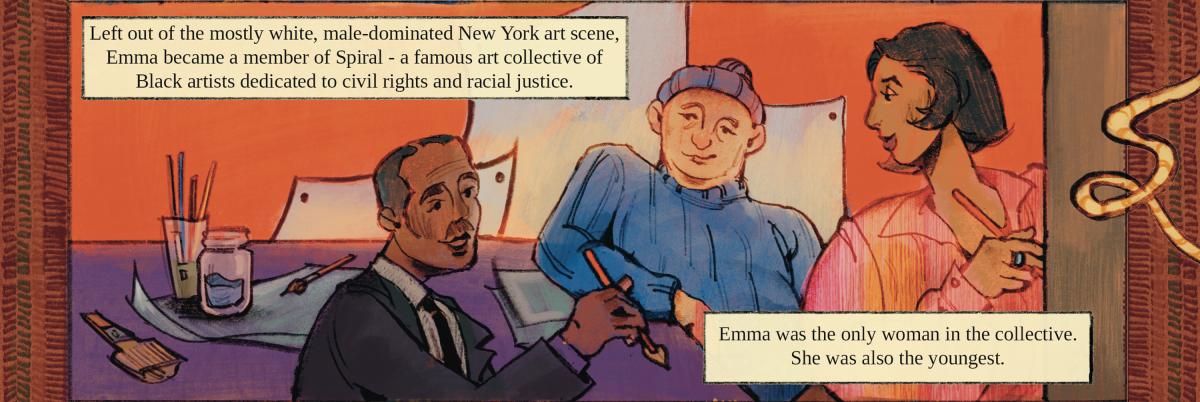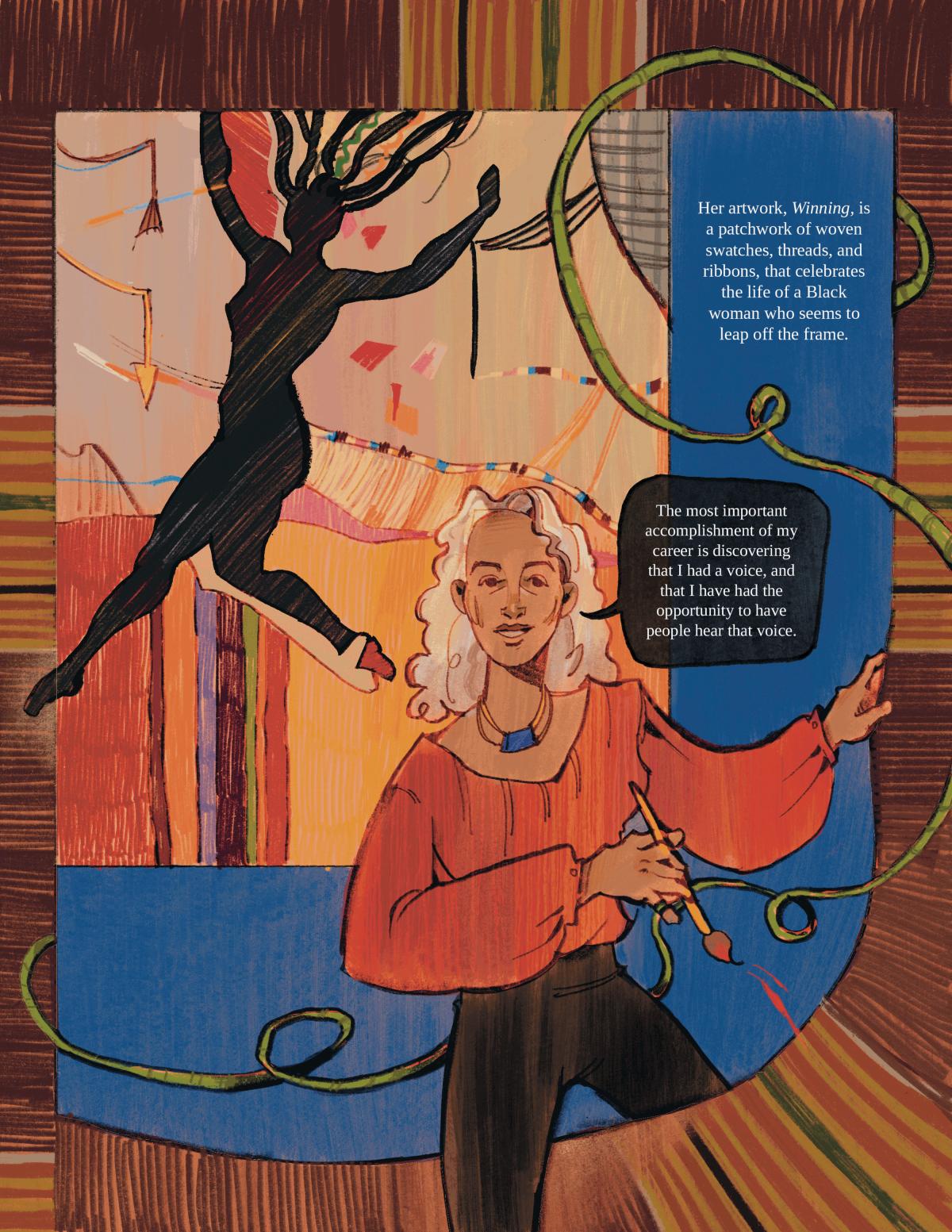
Painter, printmaker, and textile artist, Emma Amos worked with political and feminist collectives throughout her career. She created colorful multi-media works that addressed her identity as a Black woman. In the comic “Winning,” illustrated by Ringling student-illustrator Elena May binti Saini Jeffery—who describes herself as "drawn to pattern and storytelling"—Amos’s life and art become a rich tapestry of story-making and story-revealing.
Born in 1937 in Atlanta, Georgia, Amos had an interest in art as a young child and made paper dolls for her friends and family. She studied art in college and, in a lovely touch by Jeffery, the path from her college front door becomes a life path that weaves throughout the story, tracking Amos’s move to New York City in the early 1960s. At that point on, in Jeffery’s inventive drawing, the path turns into yarn and literally becomes the story’s narrative thread, accompanying Amos on her journey. Each page is also framed by a colorful textile-inspired border.
In the New York City of the 1960s, the art scene Amos encountered was dominated mostly by white men. She joined Spiral, a collective of Black artists engaged with social justice and civil rights issues, becoming the youngest and only member of the influential group. Her time there helped shape her sensitivity to color and her passion for printmaking, painting, and weaving. At one point, she owned eight looms and taught textile design.
The comic concludes with an illustration of Emma Amos’s artwork, Winning, from SAAM’s collection. This patchwork of woven swatches, threads, and ribbons, celebrates the life of a Black woman who seems to leap off the frame. In Jeffery’s hands, Amos seems to leap off the page, too. This remarkable comic is not only a celebration of Emma Amos’s life and accomplishments, but of Elena Jeffery’s talents and interests that overlap with Amos’s: two visual artists drawn to weaving tales through color, pattern, and storytelling.
This comic is part of a series Drawn to Art: Tales of Inspiring Women Artists that illuminates the stories of women artists in the collection of the Smithsonian American Art Museum. Inspired by graphic novels, these short takes on artists’ lives were each drawn by a student-illustrator from the Ringling College of Art and Design.
We invite you to read the comic and share with your friends and young people in your life.





















